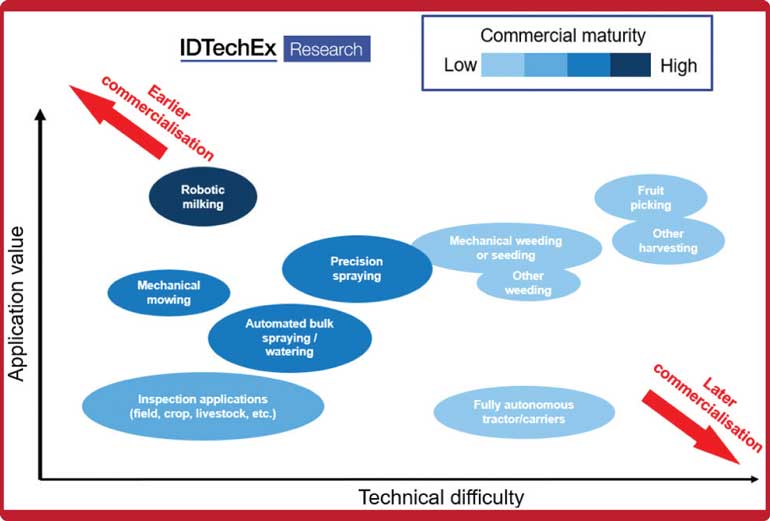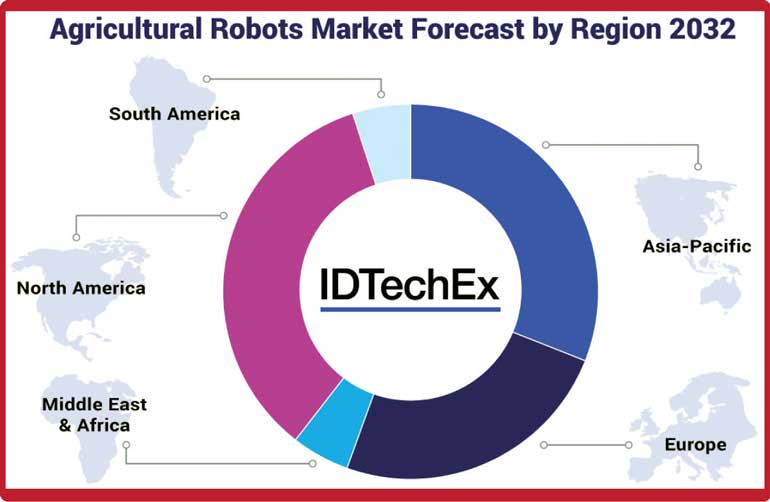Friday Jan 02, 2026
Friday Jan 02, 2026
Friday, 28 January 2022 00:00 - - {{hitsCtrl.values.hits}}

'Agricultural Robotics Market 2022-2032' provides a generalised chart of the technical difficulty, application value, and level of adoption - IDTechEx

Agricultural Robots Market Forecast by Region 2032 - IDTechEx
IDTechEx has recently released “Agricultural Robotics Market 2022-2032”, a market research report exploring the technical and market factors that are shaping the emerging industry around agricultural robotics.
This report is focused on key technologies (e.g., AI, sensors, GPS, imaging systems, etc.) and applications (weeding, harvesting, monitoring, etc.). It analyses recent challenges in the agriculture industry due to the COVID-19 pandemic and how robotics and technology developments will change the business of agriculture, enabling ultra-precision farming, helping to mitigate the challenges, and maintaining sustainable developments.
The report develops a detailed roadmap of how these challenges have influenced the agriculture industry, what technologies have been widely applied as of today, what are the typical application areas of agricultural robots, and what makes different application areas have various maturity and technology readiness levels (TRL).
In particular, this report provides:
The adoption of agbots is determined by both technical difficulty and application value
Although the technologies can vary significantly depending on the tasks, IDTechEx summarises them into three mainstream categories that are autonomous mobility, direct interaction, and indirect interaction. The report explains how IDTechEx categorises agricultural robots into these three categories, as well as within each category, the barriers and timeline of development, and what drives the core demand of farmers.
A good example is weeding robots and harvesting robots. One of the fundamental factors causing differences in the popularity of these two robots is the demand. In agriculture, harvesting is typically only needed for a few months, therefore, farmers are less willing to invest too much to get a machine that can only be used for a short period. By contrast, weeding machines are much more popular because weeding is constantly needed throughout the year. For this reason, weeding robot is much more commercialised available than harvesting robots.
Forecast: Global market of agricultural robotics is projected to reach $ 7.88 billion by 2032
The global market for agricultural robots is forecast to reach $ 7.88 billion by 2032, with a CAGR of 13.09% compared with 2022. By 2032, Europe remains the largest market, followed by North America, APAC, South America, and MEA. North America and APAC are expected to have the quickest growth in the upcoming decade whereas Europe has the slowest growth.